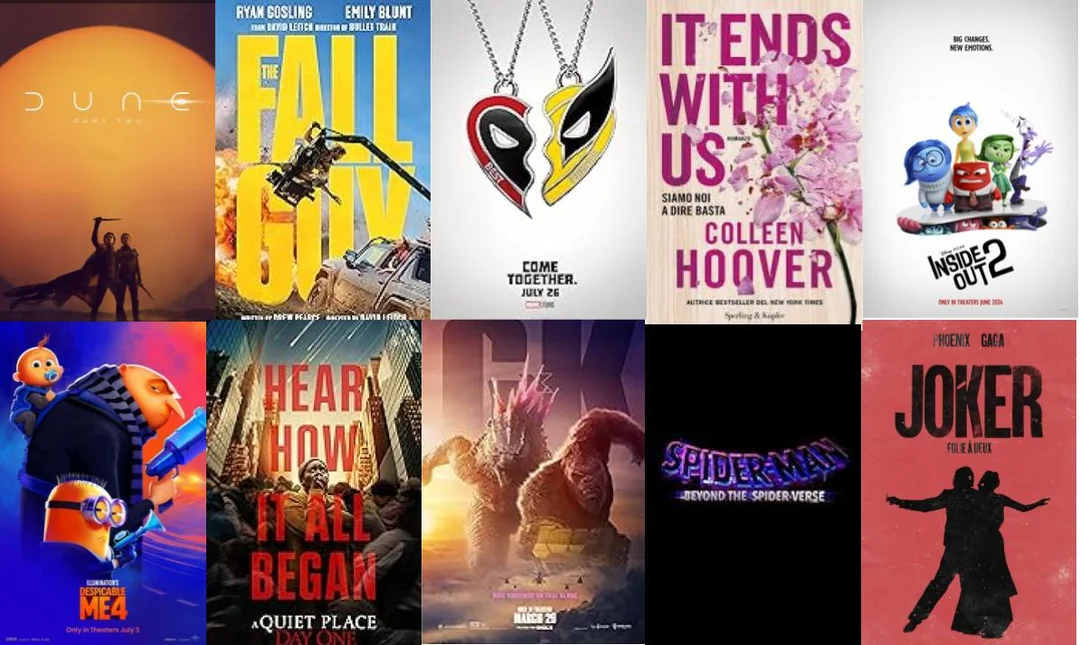The worlds of gaming and movies have long been intertwined, with both industries evolving in parallel, influencing each other in significant ways. From the early days of video games featuring basic plotlines and pixelated graphics to today’s immersive cinematic experiences, the relationship between the two has grown deeper, shaping the way stories are told across both mediums. As technology advances, the boundaries between gaming and movies continue to blur, creating an exciting new era of interactive entertainment.
1. The Rise of Movie-Inspired Video Games
The gaming industry has been inspired by movies for decades, with video games based on films such as Star Wars, Harry Potter, and Lord of the Rings gaining massive popularity. These games often attempt to capture the spirit of their cinematic counterparts, allowing players to step into the shoes of their favorite characters or relive iconic scenes from the films.
While some of these adaptations have been criticized for lacking depth, others have successfully translated the essence of the films into engaging interactive experiences. Games like The Witcher 3: Wild Hunt, though not based on a film, draw heavily from cinematic storytelling techniques and have raised the bar for movie-based video games. With advancements in graphics and storytelling, movie-inspired video games are becoming more immersive and sophisticated, providing players with experiences that rival the films themselves.
2. Cinematic Storytelling in Video Games
One of the most exciting trends at the intersection of gaming and movies is the increasing use of cinematic storytelling in video games. With the rise of high-quality graphics, motion capture technology, and sophisticated voice acting, video games are now able to tell stories with the same emotional depth and visual flair as movies.
Games like The Last of Us, Red Dead Redemption 2, and God of War have been praised for their cinematic quality, offering complex characters, intricate plots, and breathtaking visuals. These games often blur the line between traditional film and interactive entertainment, as players navigate a rich narrative while being actively involved in the story’s outcome.
3. The Emergence of Video Game Movies
As video games continue to grow in popularity, so too does the demand for video game adaptations in the movie industry. In recent years, we have seen a surge in films based on popular games such as Tomb Raider, Sonic the Hedgehog, and The Super Mario Bros. Movie. These adaptations aim to bring beloved gaming characters and stories to the big screen, offering fans a new way to engage with their favorite franchises.

While early video game adaptations were often met with skepticism and poor reception, modern films have started to find success, thanks to advancements in CGI, better storytelling, and a growing understanding of what makes video games appealing to audiences. As the lines between gaming and movies continue to merge, we can expect to see even more successful crossovers in the future.
4. Interactive Movies and Gaming Technology
Another fascinating area where gaming and movies intersect is the rise of interactive films. These films offer viewers the ability to make choices that influence the narrative, creating a unique hybrid of traditional cinema and video game mechanics. Netflix’s Bandersnatch, an interactive episode from the Black Mirror series, is a prime example of this growing trend.
While interactive films are still in their infancy, they represent a promising direction for the future of entertainment, combining the cinematic visuals and storytelling of movies with the interactivity and player agency of video games. This could pave the way for a new genre of storytelling, where audiences can influence the plot and characters in real-time.
5. The Future of Cross-Media Entertainment
Looking ahead, the intersection of gaming and movies will continue to evolve, with both industries influencing each other in exciting ways. The future may bring even more immersive experiences where video games and movies are integrated into single, cross-platform experiences. This could include virtual reality (VR) or augmented reality (AR) technologies, which would allow players to not only interact with a game but also immerse themselves in cinematic worlds that blur the lines between reality and fiction.
In addition, advancements in artificial intelligence (AI) could help create dynamic narratives that change based on user choices, making the entertainment experience even more personalized and responsive. Imagine a world where the story evolves in real-time, depending on the player’s actions across multiple media, combining the best of both gaming and cinema.
6. Collaborations Between Game Developers and Filmmakers
As both industries continue to intersect, more collaborations between game developers and filmmakers are likely to emerge. Directors, screenwriters, and producers are increasingly recognizing the storytelling potential of video games, while game developers are borrowing from film techniques to create more engaging narratives.
The recent collaboration between legendary director Hideo Kojima and film producer Guillermo del Toro for the Death Stranding game is an example of how these worlds are merging. With the involvement of well-known filmmakers, games like Death Stranding incorporate cinematic visuals and complex narratives that appeal to fans of both mediums.
These partnerships not only push the boundaries of interactive entertainment but also open up new avenues for creativity, blending the artistry of filmmaking with the immersive experience of gaming.
7. The Impact of Streaming and Gaming Services
The growth of streaming platforms and gaming services has further accelerated the convergence of movies and games. Platforms like Netflix and Amazon Prime Video are investing in both movie and game production, creating ecosystems where users can seamlessly switch between watching movies and playing games.
Additionally, services like Xbox Game Pass and PlayStation Now have made it easier for gamers to access a wide range of titles, while streaming platforms such as Twitch provide a space for players to share their gaming experiences with a wider audience. These services are redefining how we consume both movies and games, creating new opportunities for interactive and immersive experiences.
Conclusion
The intersection of gaming and movies represents one of the most exciting developments in the entertainment world. As technology continues to advance, the boundaries between the two mediums will continue to blur, offering audiences more immersive, interactive, and innovative experiences. Whether through movie-inspired video games, cinematic storytelling in games, or cross-media adaptations, the future of entertainment is one where the worlds of gaming and cinema collide, creating a richer and more dynamic landscape for creators and fans alike.











